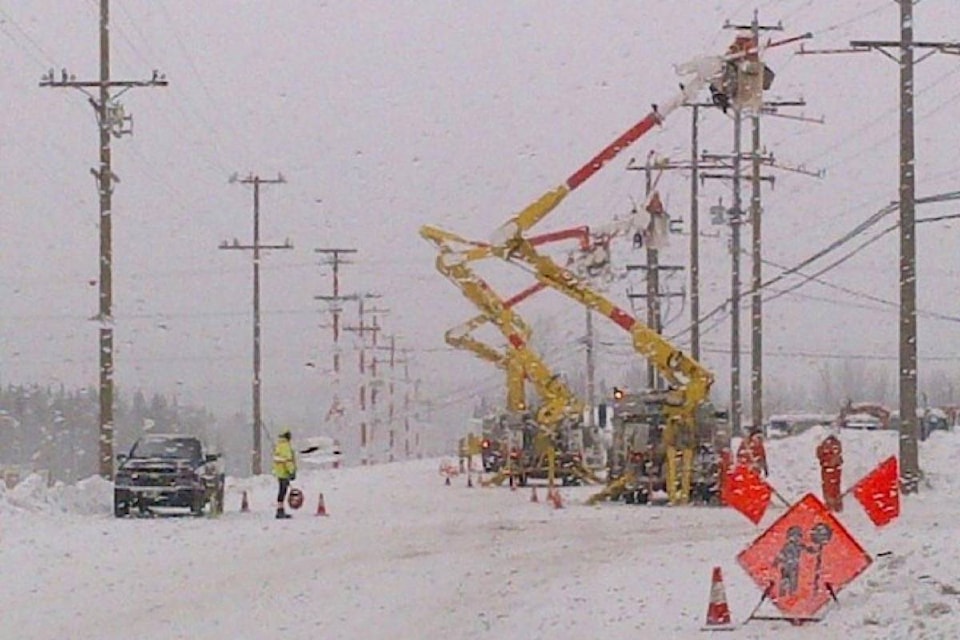Are you prepared for freezing temperatures and the possibility of power outages? If so, you’re in the minority, according to a new BC Hydro report.
“Weathering the storm: Many British Columbians not prepared for increasingly severe winter storms” (http://bit.ly/2XHTt0k) looks at the challenges faced by BC Hydro as a result of an increase in the frequency and severity of winter storms in the province. It finds that despite experiencing the most damaging winter storm in BC Hydro’s history last year, many British Columbians remain unprepared for storm-related power outages.
In 2018, British Columbians experienced a record number of power outages as a result of winter storms that caused trees and vegetation to come into contact with BC Hydro’s system. This type of damage caused 30 per cent of outages in the province, and is largely the result of a powerful storm in December 2018—the largest one in BC Hydro history—that caused unprecedented damage and left more than 750,000 customers without power. Around seven per cent of affected customers were without power for more than 72 hours.
The increase in severe storms is a reminder to be prepared in the event that they cause power outages, leaving people cold and in the dark. Despite this, a survey commissioned by BC Hydro found that while British Columbians have noticed the increase in storm damage in recent years, more than 60 per cent have not taken steps to be more prepared for storm-related power outages, and more than half do not have an emergency kit. This includes the majority of the people who were affected by the December 2018 windstorm.
As you pull out winter coats and sweaters along with the Christmas decorations, make sure you and your family are ready for the cold weather. Environment Canada will issue arctic outflow warnings when extremely cold winds that can create wind-chill values of -20° C or colder are forecast for six or more hours.
Use caution and limit your outdoor exposure under these conditions, as there is an increased risk of frostbite and hypothermia. Parents and pet owners should make sure that children and pets are inside during these times.
If you have to go outside, wear weather-appropriate clothing, and dress in layers with a wind- and water-resistant outer layer, which enables you to adjust to changing conditions. Use hats, scarves, and gloves to cover as much exposed skin as possible, and try to stay dry. If you get wet, change out of your wet clothing as soon as possible.
Power outages can mean that it might get almost as cold inside as it is outside. Be ready for storm-related power outages by having an emergency plan and a well-stocked emergency preparedness kit with supplies for each member of the household for at least 72 hours. The kit should include a flashlight and extra batteries; candles; a first aid kit; any required medications; and non-perishable food and bottled water.
If you come across a downed or damaged power line, assume it is live and dangerous. Stay back at least 10 metres (the length of a bus) and call 9-1-1 immediately to report it.
For tips on seasonal readiness, how to prepare an emergency plan, and what to include in an emergency kit, visit PreparedBC at www.preparedbc.ca or BC Hydro at www.bchydro.com/besafe.
editorial@accjournal.ca
Like us on Facebook and follow us on Twitter
